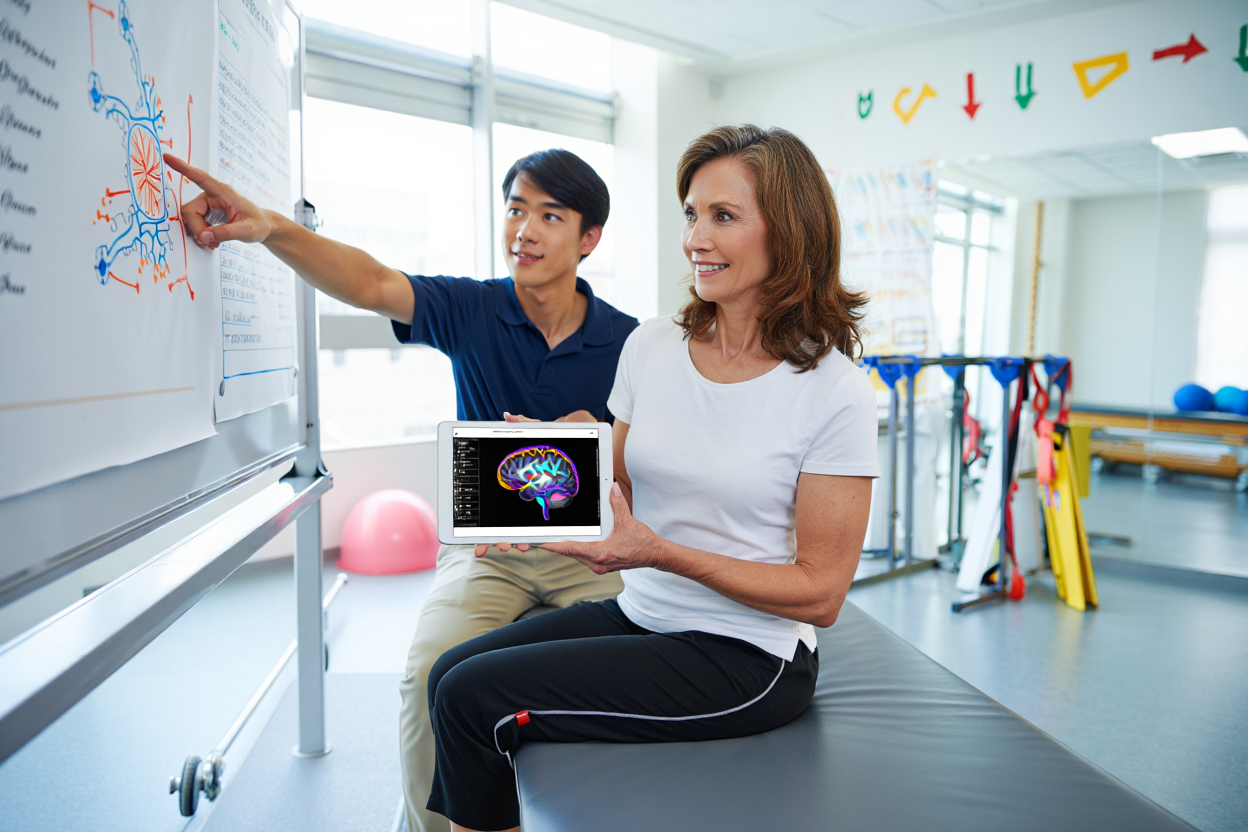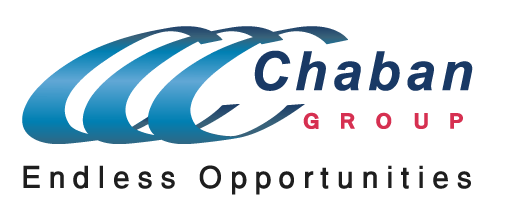Neuromotor Exercise in Rehabilitation
In rehabilitation, it’s common to focus on strength or cardiovascular endurance—but
neuromotor exercise is a critical pillar that is often overlooked. Neuromotor training improves
coordination, balance, proprioception, and the brain's control over movement. These aspects are especially important after neurological events such as
stroke,
traumatic brain injury, or in conditions like
Parkinson’s disease,
multiple sclerosis (MS), and
age-related decline.
Why and When Is Neuromotor Exercise Necessary?
What Is Neuromotor Exercise?
Neuromotor or neuromuscular exercise involves targeting the nervous system's control over movement.
It includes:
- Balance training (e.g., standing on one foot)
- Agility drills (e.g., side steps or quick changes in direction)
- Proprioceptive stimulation (e.g., walking on uneven surfaces)
- Dual-task training (e.g., walking while talking or solving problems)
These exercises encourage the body and brain to work in harmony, reinforcing connections that may have weakened due to injury, disease, or age.

Why Neuromotor Training Matters
Traditional rehabilitation programs emphasize strength and endurance—but many patients continue to walk with poor coordination, compensatory movement patterns, or fear of falling.
Neuromotor training addresses this gap by:
- Retraining the timing and sequencing of movement
- Enhancing balance reactions
- Improving walking efficiency and safety
- Supporting neuroplasticity (the brain’s ability to rewire)
How Just Walk Reinforces Neuromotor Recovery
Just Walk is a wearable resistance system that applies gentle, adjustable resistance to the legs and hips during walking. It promotes proper gait mechanics and activates deep neuromuscular pathways in real time.
Key Benefits:
✅ Improves Gait Patterns
Just Walk helps correct issues like foot dragging, asymmetrical stride, or reduced step height by guiding the user into more functional walking patterns.
✅ Activates Proprioception
Resistance provides feedback to joints and muscles, enhancing awareness of foot placement and posture.
✅ Trains the Brain and Body Together
By walking with Just Walk while performing daily tasks or navigating different environments, users engage dual-task motor and cognitive systems—essential for restoring independence.
✅ Reduces Fall Risk
Enhancing neuromotor coordination and strength in a controlled way contributes to improved stability and confidence.
Real-World Applications
Just Walk is already used in clinical and home environments for:
- Post-stroke rehabilitation
- Multiple sclerosis (MS)
- Parkinson’s disease
- Balance and fall prevention in older adults
- Post-surgery gait retraining (e.g., hip/knee surgery)
Daily Use Tips
- Start with 15–20 minutes per day indoors
- Walk in a hallway, living room, or clinic corridor
- Include light cognitive tasks (e.g., conversation, counting) during walking
- Progress gradually under clinical supervision or family support
Frequently Asked Questions (FAQ)
What makes neuromotor exercise different from regular exercise?
Neuromotor exercise focuses on the
nervous system’s ability to control movement, not just muscle strength or endurance.
Who should use Just Walk™?
Anyone experiencing challenges with gait, balance, or coordination due to neurological or orthopedic conditions. It's particularly effective for stroke survivors, people with Parkinson’s or MS, and seniors at risk of falls.
How is it better than traditional resistance bands or ankle weights?
Just Walk offers
dynamic, wearable resistance that adjusts to the user’s movement. It provides continuous feedback and promotes natural gait without altering posture or body alignment.
Can Just Walk be used at home?
Yes. It's portable, easy to put on, and designed for
functional rehabilitation in real-life environments—like walking in the hallway, navigating stairs, or moving around the house.
Sources
American College of Sports Medicine. Guidelines for Exercise Testing and Prescription (2022)
Pacific Neuroscience Institute. The Advantage of Neuromotor Exercise for Brain–Body Health
Centers for Medicare & Medicaid Services (CMS). Public Meeting Agenda - Neuromotor Device Coding
GEHA. Types of Exercise and Their Benefits
Just Walk™ - Chaban Medical.
Product Page
Summary
Neuromotor exercise is essential for anyone looking to regain safe, confident, and coordinated movement. Just Walk makes neuromotor training accessible and practical—helping users build strength, retrain the brain, and walk better in daily life.
Important
This article is for informational purposes only and is not a substitute for professional medical advice; always consult your doctor or physical therapist before starting any exercise or using any device.



